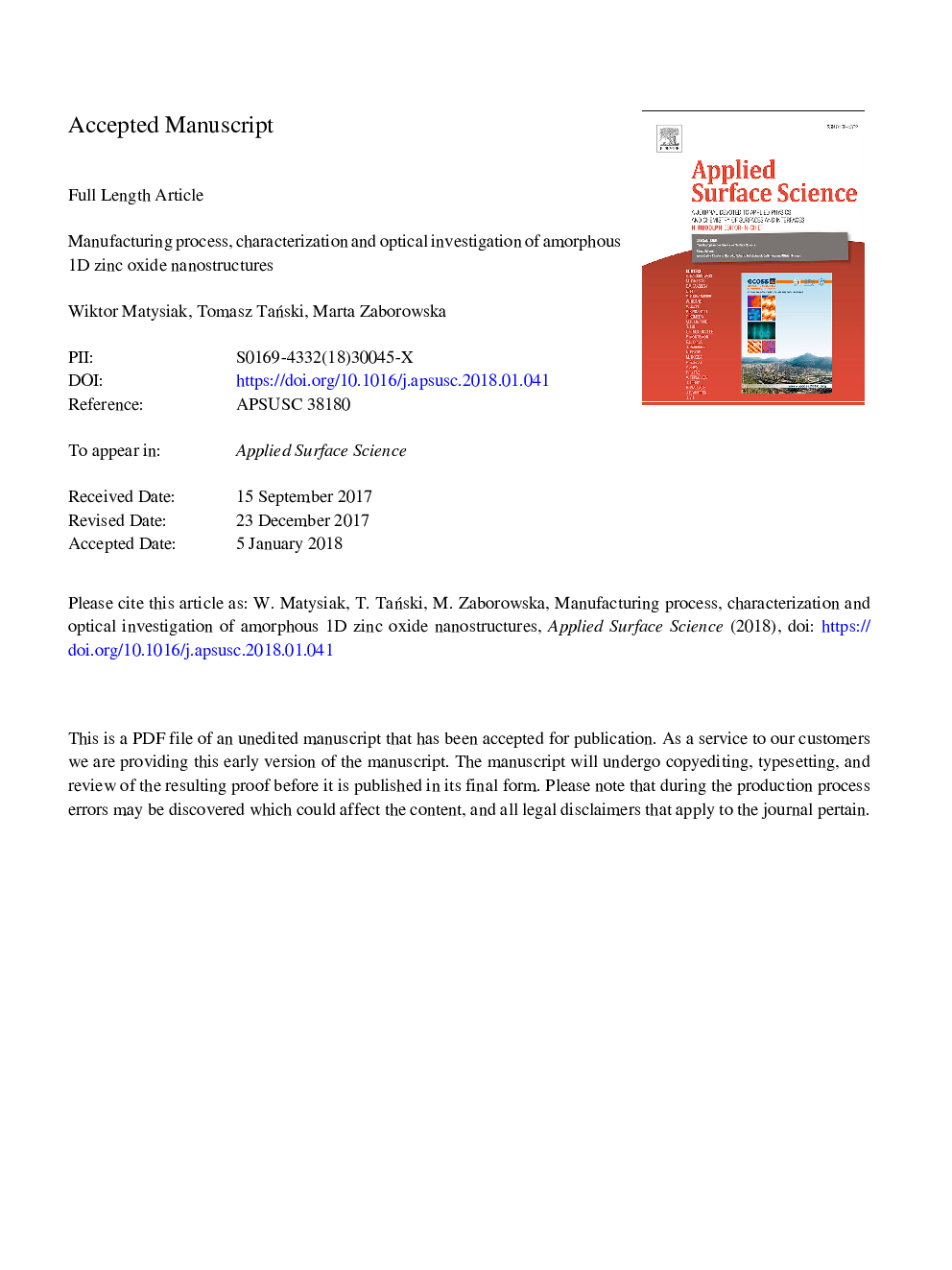| Article ID | Journal | Published Year | Pages | File Type |
|---|---|---|---|---|
| 7835070 | Applied Surface Science | 2018 | 14 Pages |
Abstract
The purpose of this article was to produce amorphous ZnO nanowires via the electrospinning process from a polyvinylpyrrolidone (PVP)/zinc acetate dihydrate (Zn(COOH)2)/dimethylformamide (DMF) and ethanol (EtOH) solution. The as obtained nanofibers were calcined at temperatures ranging from 400 to 600â¯Â°C to remove the organic phase. The one-dimensional zinc oxide nanostructures were studied using a scanning electron microscope (SEM) and a transmission electron microscope (TEM) to analyse the influence of the used temperature on the morphology and structures of the obtained ceramic nanomaterials. In order to examine the chemical structure of nanowires, the energy dispersive spectrometry (EDX) was used. Besides, a thermogravimetric analysis (TGA) was performed to show the polymer concentration loss in a function of temperature in order to obtain pure zinc oxide nanowires. The optical property analysis was performed on the basis of UV-vis spectra of absorbance as a function of the wavelength. Using the modified Swanepoel method, which the authors proposed, and the recorded absorbance spectra determined the banded refractive index n, real nâ² and imaginary k part of the refractive index as a function of the wavelength, complex dielectric permeability É, real and imaginary part εr and εi of the dielectric permeability as a function of the radiation energy of the produced ZnO nanowires.
Related Topics
Physical Sciences and Engineering
Chemistry
Physical and Theoretical Chemistry
Authors
Wiktor Matysiak, Tomasz TaÅski, Marta Zaborowska,
